After three years of occupying the plaza in front of the Mexican Senate, the groundbreaking cannabis protest camp known as Plantón 420 seemed to be facing some serious messaging challenges. (For the non-Spanish speakers, a “plantón” is a popular, 24/7 protest tactic in Latin America whose name means literally, a site where something is planted.)

The red flags were obvious when a random gringo told me they were buying weed at the camp, “to support the activists.” But the activists weren’t dealing—their demands were laser-focused on individual rights, not commercial industry. It was clear that the dude was actually purchasing nugs from the salespeople who had been deployed by the powerful Unión de Tepito cartel, and who now dotted Plaza Luis Pasteur outside the camp itself.
It was an honest mistake in a complex situation. But nonetheless, the gringo’s misstep exposed the challenges presented by a lack of political will and the organized crime wildcard that face the Mexican cannabis legalization movement.
Let’s be clear: without some kind of prohibition, you don’t have illegal drug sales. Many of the consumers who flocked to Plaza Luis Pasteur for a constitutionally protected smoke break would have been happy to buy their weed at a dispensary, if such a thing were legal. The cannabis legalization movement certainly did not create the country’s massive cartel economy—rather, it presents the country with a real path towards reducing the narcos’ bottom line.
But many of the protest camp’s non-420-friendly passers-by at its prominent intersection of Paseo de la Reforma and Avenida Insurgentes weren’t thinking about the need to end the Drug War when they saw the commercial activity going down at the plantón. They were seeing the reinforcement of longstanding stereotypes that associate cannabis users with criminal behavior.
And even seasoned cannabis activists had to admit that the cartel presence had become both dangerous for stoners, and a terrible advertisement for cannabis legalization in the eyes of the non-consuming public.
THE “CLEANSING”
On February 14, Senate Majority Leader Ricardo Monreal made a plea to Mexico City Mayor Claudia Sheinbaum to remove the camp. Senators had never been thrilled to have the plantón blocking their front door visitor’s entrance in the first place. Monreal didn’t want to see any human rights violations go down. “But it’s urgent to recover that space,” he said.
So it was that around 1am on February 18, more than100 agents sent by the city’s Secretariat of Citizen Security descended upon and effectively destroyed the cannabis protest camp in an act one major news site called a “limpieza,” or cleansing. Activists filmed the aftermath of the officials taking away the tents where activists once lived, their makeshift kitchen, and the ones in which they gave classes in cannabis cultivation and other 420-related topics.
Perhaps most heartbreakingly, authorities uprooted the hundreds of “protest plants” that had given many Mexicans their first glimpse of marijuana as a leafy green living thing, rather than the boogeyman such media sources as the sermonizing Rosa de Guadalupe Catholic TV show have irreparably associated with hundreds of thousands of Drug War deaths. The protest camp’s resident cat, tethered by a leash, looked on at the carnage impassively.
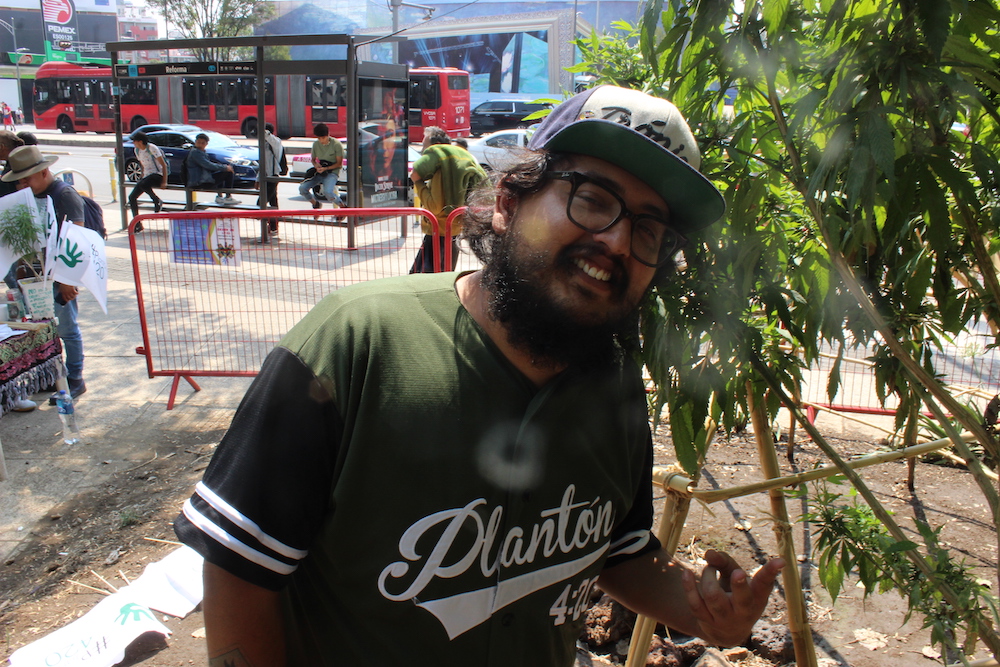
“A DREAM COME TRUE”
Plantón 420 is dead, but long live Plantón 420.
Now would be a good time to talk about what made it such a force for change in the movement to end cannabis prohibition.
On February 2, 2020, the protest camp moved into Plaza Luis Pasteur, right in front of the country’s Senate visitor’s entrance. The action established the space, at the crux of two major Mexico City avenues, as a “tolerance zone” for smoking weed, under Mexico’s exuberant legal protections for the right to protest.
It was a bold move, and it was an act of desperation. Cannabis activists had tried countless strategies to compel legislators to honor the Supreme Court’s 2018 declaration that prohibition is a violation of Mexicans’ constitutional rights. But the pot-wary President Andrés Manuel López Obrador’s administration has refused to create the regulation necessary to establish a Mexican cannabis industry. In 2020, a frustrated high court ordered the federal health agency to provide permits for which one can apply if you want the government to honor your personal consumption, cultivation, and possession.
Mexican stoners are far from unorganized. In Mexico City, there have been pro-legalization marches in the capital since 2000, and weed advocacy going back to the days of Diego Rivera and the influential decriminalization advocate Dr. Leopoldo Salazar Viniegra. In 2019, weed advocates began setting up informational tables in Plaza Luis Pasteur twice a week, a few feet from the stern statue of the father of vaccination, microbial fermentation, and pasteurization himself.
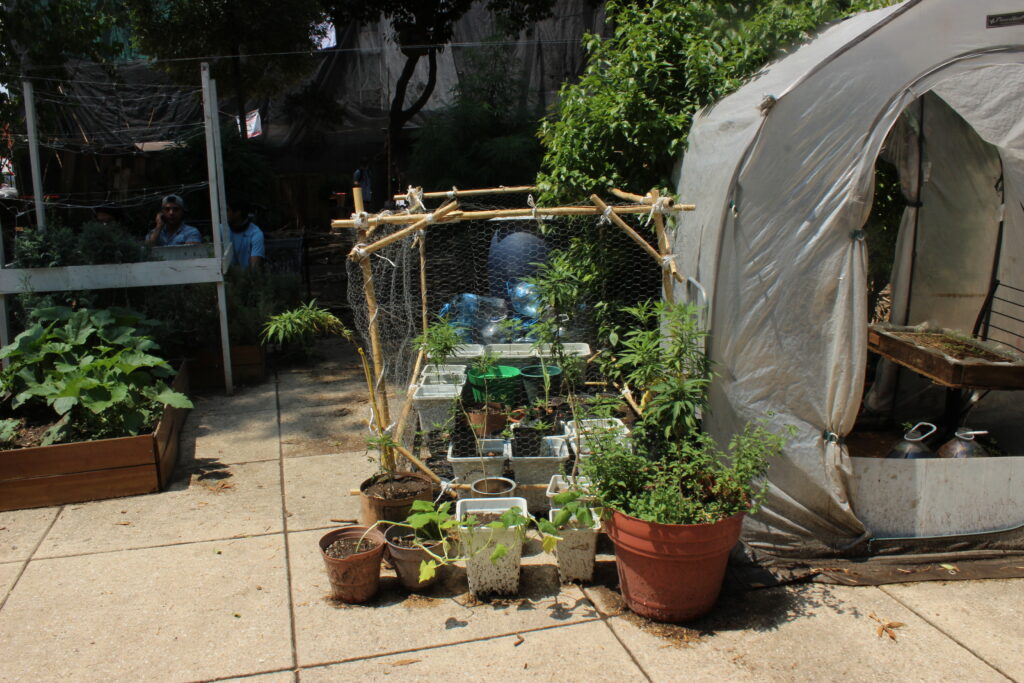

They erected temporary camps for 12 hours to a few days, blocking the Senate’s visitors entrance with press conferences, protest signs, and defiant clouds of smoke. The next step was starting to plant cannabis in the most prominent garden plots they could find: along CDMX’s picture-perfect boulevard the Paseo de la Reforma, and at the base of its most recognizable monument Ángel de Independencia.
The activists promised to plant double the amount of seedlings each time authorities removed their brave green sprouts. In February of 2020, when the count had risen to 32 plants, they decided they were done messing around, and planted the plantón—this time, for the forseeable future. They had four demands: equal treatment for cannabis consumers, and the right to home cultivation, personal possession, and public consumption sites.
At times, the plantón was a party. Booming sound systems installed in the plaza sometimes attracted thousands of cannabis consumers, who vibed to dub and boom-bap hip hop under billowing, pungent clouds. Feelings ran high on these days underneath the soaring Senate building, like maybe someone was listening to the demands of cannabis users. I caught the feeling, helping to organize an afternoon gathering to introduce new people to the plantón just before Covid hit, with DJ Rosa Pistola, featuring DJs from Mexico City’s seminal NAAFI electronic music label, Club Lapi founder FKA Phaedra, and fellow Bay Area transplant Mennlay.
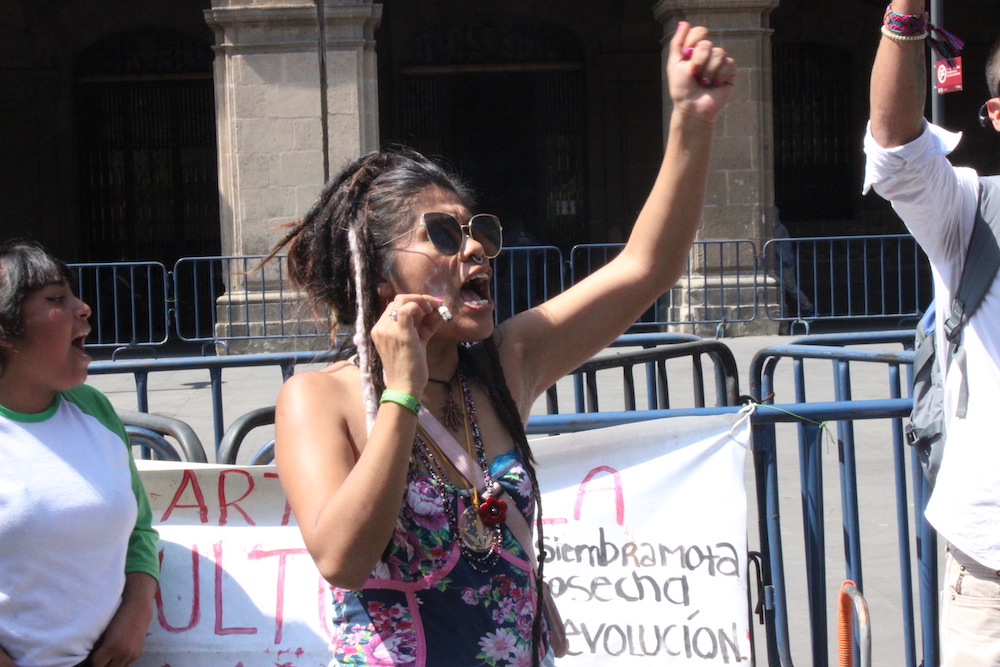
Then the pandemic dropped. The plantón contracted, erecting plastic boundaries around its circumference and dropping the public events. Still, it was common day or night to see hundreds of people who’d dropped by to smoke a jay in the “tolerance zone” that formed outside the camp’s walls. They sat, leaning against the metal fence surrounding the Senate, with their bikes and dogs and friends, exercising their right to protest by passing porros.
Inclusivity was always a goal at the plantón, which featured a women’s circle that sought to make space in a male-heavy environment and organized events featuring purification rituals and reproductive health lessons. Decisions at the site were largely made collectively, with everyone who attended general assemblies having an equal vote.
“The assemblies were very significant,” Leopoldo Rivera of Movimiento Cannábico Mexicano, a longtime cannabis activist who was involved with the plantón effort from its earliest days and founder of the hemp-focused La Juanita Coffeeshop, tells 48hills. “The whole [cannabis] community participated, everyone had the right to speak. The fact that we were all together, fighting for an ideal—and not yet surrounded by a hostile situation—that was a dream come true.”
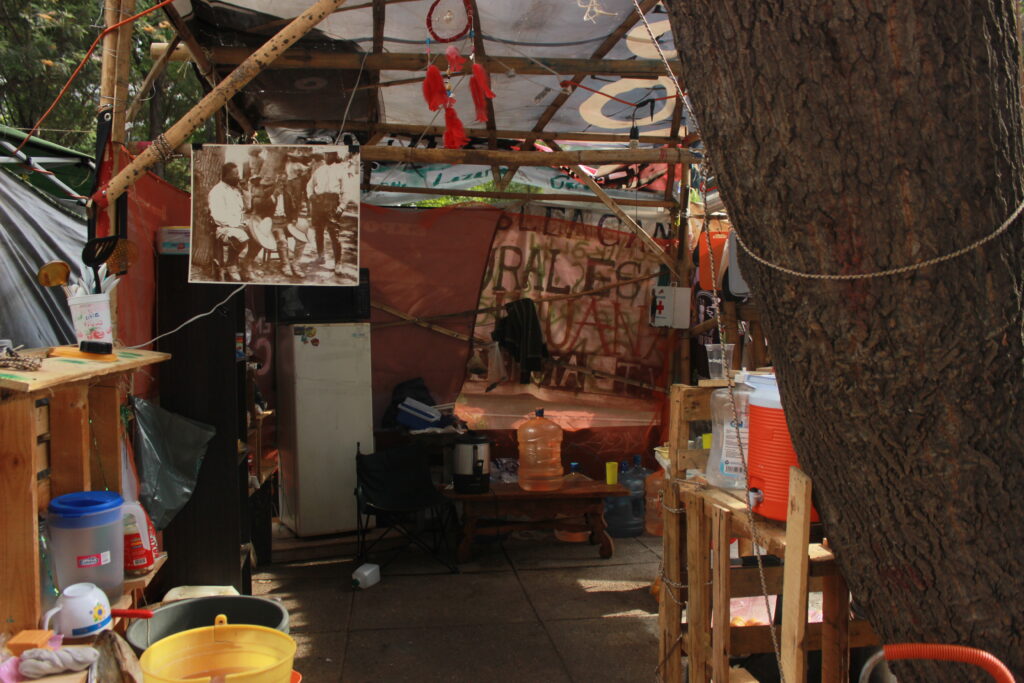
MORE THAN SYMBOLIC
Over the years, the individuals and collectives leading the plantón shifted from Movimiento Cannábico Mexicano to Plantón 420. But the protest camp remained the symbolic center of the country’s legalization movement. Such was its success that similar cannabis plantónes sprung up in cities across the country. Some were dismantled immediately by the cops, while others flourished, like the city of Puebla’s plantón.
In Mexico City alone, several smaller tolerance zones now welcome smokers, from a camp at the historic center’s Hidalgo metro station and another at the foot of the soaring Estela de Luz, located at the entrance of the massive Chapultepec Park.
The Senate plantón’s impact was more than symbolic. A 2020 protest against the use of drug dogs in the Mexico City metro system saw activists board the subway en masse carrying living cannabis plants. It seems to have discouraged the deployment of canines on commuting drug users. A cannily executed protest by activists and lawyer Juan de Garay from the site’s “Plantón 420” collective in the city of Oaxaca resulted in the municipality declaring that it had no laws on the books against public cannabis consumption, ensuring protection from legal action for streetside smokers.
“SECURITY BECAME TOO MUCH FOR US”
But after three years, the strain of running the CDMX became too much for the some of the protest camp’s activists.
Cultivator and Plantón 420 activist Miguel Fernández says the group petitioned the government multiple times for help with security concerns (which, after a stampede took place at a particularly large event at Plaza Luis Pasteur, also included crowd control.) He says the only result of the petitions were threats on activists’ personal safety from the cartel members at the site.
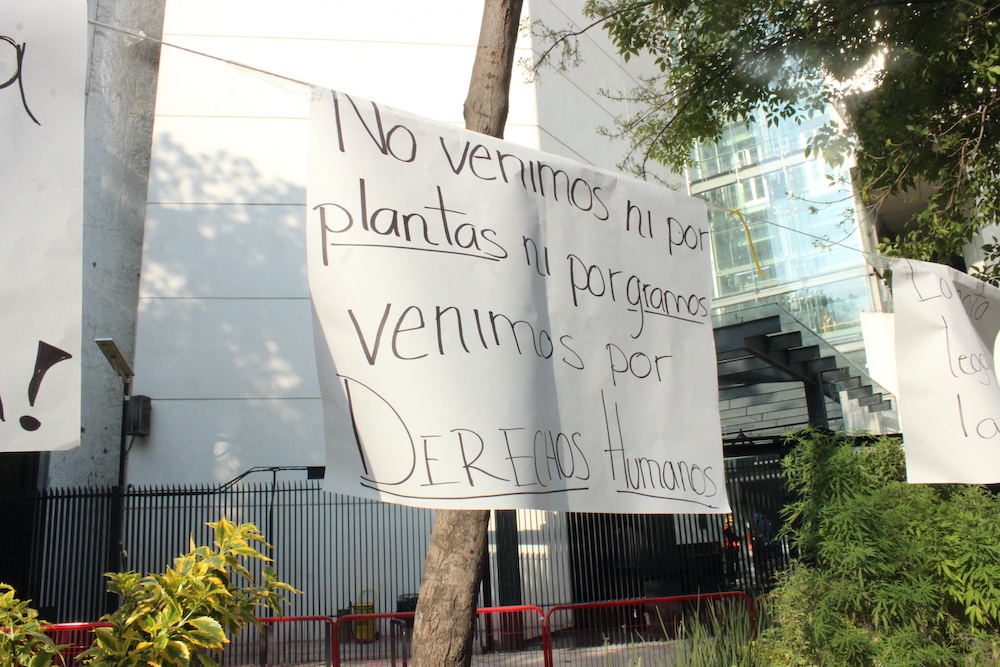
“We always had the idea that if we got to the point where security became too much for us to handle—the security of the activists inside the camp as well as the responsible consumers outside it—that we’d make the decision to leave,” Fernández told me on my Mexico City radio show Crónica. He added that the group saw the political significance of the site as having been reduced, particularly since the Senate shifted its visitors entrance to another side of the building.
On February 2, Plantón 420 announced its withdrawal from Plaza Luis Pasteur. They left the installations for the other activists, some of whom saw the announcement as a sell-out of the cannabis community—and wanted to continue resisting at the site. The diverse collectives who stayed behind rejected the prior administration’s name Plantón 420, and renamed themselves La Comuna 420 (in English, “The 420 Commune.”)
“The idea is to create a space that could be a kind of Chapultepec Park, or a Six Flags of weed,” La Comuna 420 activist Enrique Espinoza told me at the end of a February 6 protest march from the Senate camp to the plaza in front of the Supreme Court. “A place where people enter and say, ‘wow,’ where they can learn something about the plant.”

Other La Comuna activists, including cultivator and Semillas Urbanas collective member Orlando Daniels, said their main concern was to preserve the protest grow plots that had served to educate so many people on the marvelous cannabis plant over the years.
“We can’t be thinking that we the activists caused the violence that occurs,” Daniels told me in an interview. “That’s a phenomenon that arises due to prohibition. The violence [at Plaza Luis Pasteur] is an example of violence at a nationwide level, not control of this space.”
Be that as it may, there seemed to be little concrete ideas for how to maintain and even grow the protest camp amidst the ever-waning tolerance of the Senate and threat from the weed capitalists thronging the plaza.
Some leaders in the legalization movement were OK with the idea of moving onto the next chapter. “The movement has so many expressions,” says Rivera. “It most definitely does not end with the removal of the plantón.”
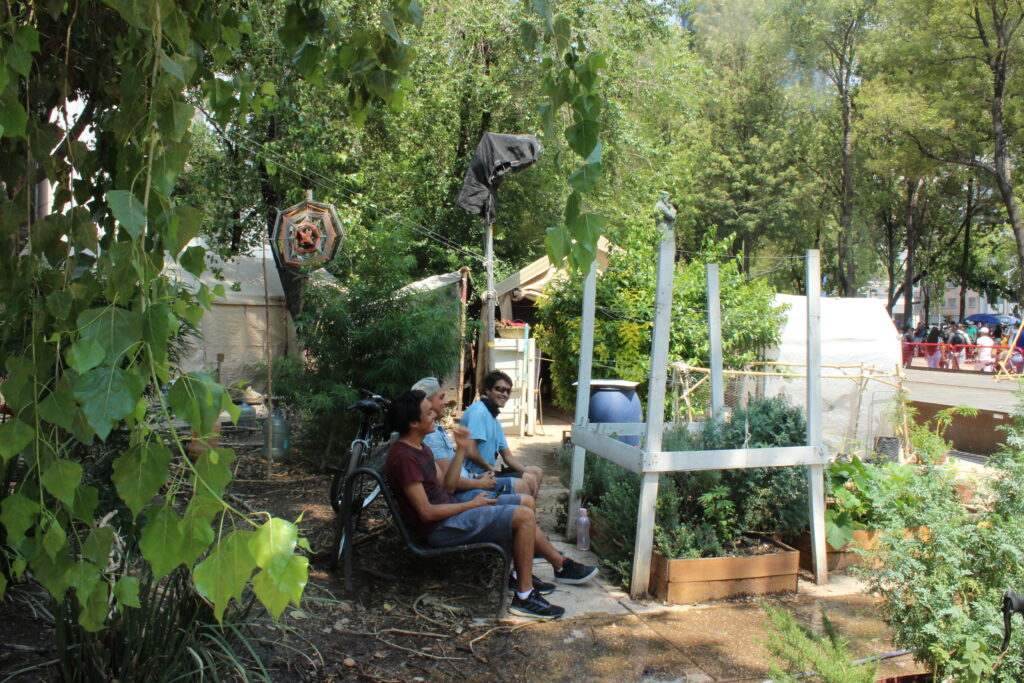
HASTA LA VICTORIA VERDE
For many who had been involved with the cannabis protest camp in Plaza Luis Pasteur over the years, the end of the site was seen as important commentary on the state of the legalization movement.
“For me, Plantón 420 was a grand exercise of our rights, that with its pros and cons showed us once again the disinterest of authorities in both society’s demands and human rights violations. But it also allowed us to visualize how far we can get if we work together with a common objective,” said activist and founder of cannabis media platform Jotvox Erandeny Gy. “The road continues.”
Certainly, enduring sites of cannabis resistance in Mexico City aren’t lacking. One can still protest-blaze at any of the smaller protest camps or enjoy the shade of the leafy oasis Huerto Roma, site of many of the city’s 420 fairs and gatherings. Hempchatas are on the menu at Rivera’s La Juanita Café, and the Biblioteca Cannábica Leopoldo Salazar Viniegra has occupied the pyramid-shaped Centro Cultural La Pirámide for decades. Recreational and medical consumers take to the streets by the thousands for May 6’s annual Global March for Marijuana, not to mention the high holiday of 4/20.
And as cannabis and its users become more visible, societal views on the plant becomes more favorable. In a 2021 poll by the University of the Valley of Mexico’s Center of Public Opinion México, 70 percent of respondents said they were in favor of cannabis legalization.
On February 22 Jualdi, the artist who contributed the plantón’s most recognizable visual identity, published an image commemorating those activists whose work made the protest camp the best visualization of cannabis users’ battle for fair treatment.
“Thanks to each and every one who supported the plantón,” speech bubbles the illustrator’s trademark sentient weed leaf, who is shown raising its fist in the air in front of the Senate and the Luis Pasteur statue. (In a somewhat meta gesture, the character also clutches a pot with a big-nugged weed plant under its arm.) “The struggle continues,” it says. “Hasta la victoria verde/Until the green victory!”






